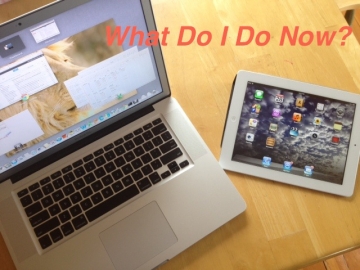Would You Like Your 1:1 iPad Initiative to Fail? PART 2
Without good professional development for iPads you will have frustrated, angry teachers and students.
 Teaching needs to adapt to the way Digital Natives learn. If you are invested in iPads, quality and sufficient professional development is a must.
Teaching needs to adapt to the way Digital Natives learn. If you are invested in iPads, quality and sufficient professional development is a must.

In last week’s article, I introduced the first of three points you need to consider for having a successful 1:1 iPad initiative—Network Infrastructure. This week’s article is related to the following question:
What is worse than your iPads not working? Frustrated and upset students and teachers!
Many people reading this article might well agree that having frustrated students and teachers is a serious hindrance to implementing any technology integration project. I believe that not only does it detract from learning, frustrated users will simply not use the technology rather than struggle with making the technology work.
Simple fact—technology that doesn’t work is a waste of everyone’s time. That being said, one needs to understand what it means for technology to “work.” Too many times, school administrators, teachers, students and IT staff limit their definition of “working” technology to its mechanical functionality. This article speaks to applicable functionality, something that is directly impacted by my second point of consideration for a successful 1:1 iPad initiative:
Point of Consideration #2: Professional Development
In order for iPads to be effectively integrated into your school, teachers must have adequate professional development. To understand what this means, I need to explain what adequate professional development entails.
Basic User Functionality
The simplest component of adequate professional development is ensuring that teachers know how to operate the iPad. Too many times, I hear of class sets of iPads being delivered to teachers with nothing more than a, “here you go, good luck” mentality of training. More than just turning the iPad on, what about the following questions?
- How do I install or delete apps?
- What are all those options in Settings?
- What do I need to Sync?
Though there are several other basic operations in which teachers need to be proficient, my point is not to list each of them; rather, I want to emphasize that one should not assume every teacher knows how to operate new technology, let alone an iPad.
So What Do I Do With it?
Using technology to enhance learning needs to go beyond the idea of doing the “same old thing” through different means. What do I mean by that? Here is an example… Let’s say a teacher limits instruction to a simple lecture followed by a worksheet students will complete. This teacher shouldn’t think he is enhancing learning if all he does is electronically provide the worksheet to students. In other words, email them a copy…
“What?” “But the teacher is using technology!” Teachers and administrators who are inadequately trained believe that is one effective use.
Today’s student is often someone who is proficient beyond most adults in social media, gaming, and accessing/consuming an abundance of information daily. Teachers need to be a little more innovative than the above example if they want to inspire students with technology, let alone increase their learning.
This is where the iPad comes in…and the answer to the question above, “So what do I do with it?”
Teachers need professional development in order to change how education is delivered in their class, and how to use the iPad to effectively engage their students. “Digital Natives” (our students) need to be able to ask questions and learn through inquiry. They need to utilize technology in the manner that Thomas and Brown discuss in their book, “A New Culture of Learning: cultivating the imagination for a world of constant change.” In this book, the authors talk about two elements that comprise their defined “new culture” of learning:
The new culture of learning actually comprises two elements. The first is a massive information network that provides almost unlimited access and resources to learn about anything. The second is “a bounded and structured environment that allows for unlimited agency to build and experiment with things within those boundaries.“1
Using the iPad as a tool, teachers can facilitate an education that allows students to both “learn about anything” and to “build and experiment.” It is through these means that the iPad can truly be used to enhance education. This kind of education embraces technology and utilizes it to inspire and motivate students to learn, which could be the topic of a series of articles.
However, the point of this article: How do teachers and students get to the point where they are both upset and frustrated? Perhaps the answer can be identified through the following:
Teachers/Administrators Key Question
If your students have access to iPads in your school, are students using them in a manner that allows them to develop their skills, answer their questions and nurture their creativity?
Student Key Question
If you have access to iPads in your classes, is your use limited to doing the “same old thing?”
The answers to these questions will definitely impact both group’s frustration levels. On one hand, lack of teacher professional development in educating students through effective use of technology will usually result in a school climate of limited use that will stifle students’ innate ways of learning. On the other hand, students under these circumstances will push the limits, skirt around rules and perhaps reject any technology integration.
Will this lead to frustration and anger? You bet.
Teachers and administrators: Teaching needs to adapt to the way Digital Natives learn. If you are invested in iPads, quality and sufficient professional development is a must.
Next Post: I thought we were only teaching students, not parents!
1Thomas, D., and J. S. Brown. A new culture of learning, cultivating the imagination for a world of constant change. CreateSpace, 2011.
